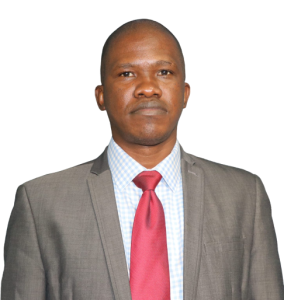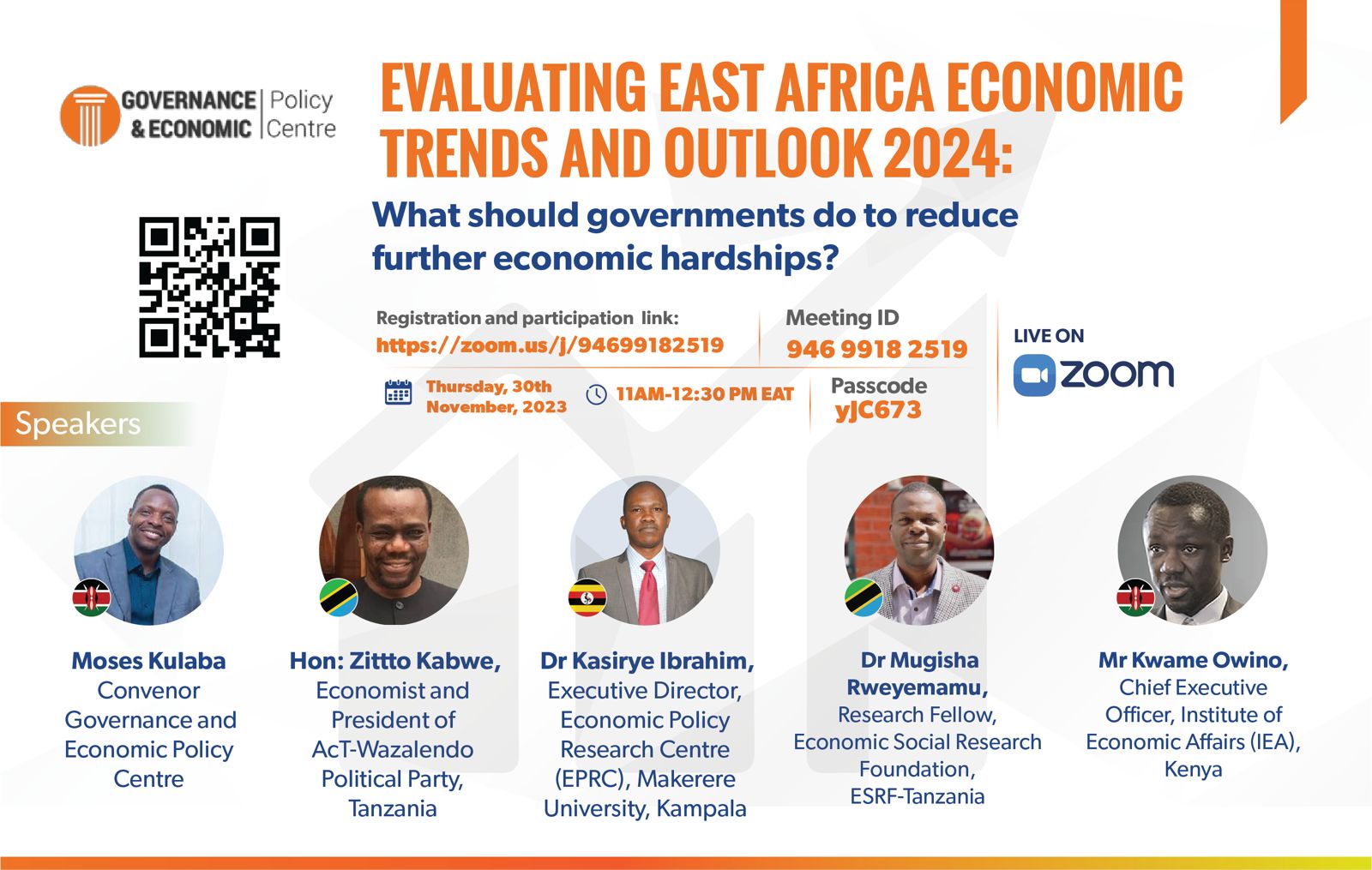Evaluating East Africa’s economic trends and outlook 2024: What should EAC governments do to reduce further hardships?
The East Africa Community is so far the largest economic block, with 7 members states with a vast territory straddling from the Indian ocean coast to the Atlantic Coast, with a staggering population of estimated 283.7 million citizens, 4.8 million square kilometers of land area and a combined Gross Domestic Product of US$ 305.3 billion[1], the EAC region is a big silent economic giant. As of November, the UNDP estimated the EAC had 489,766,467 million people (6% of the total world population)[2], making it one of the fastest growing regional economic blocs in the world and number 1 in Africa among subregions ranked by population. Despite this potential, the region faces multiple economic and political setbacks.
In 2023, the EAC faced significant economic meltdown, with depreciating currencies, rising costs of living and political unrests, tainting the prospects for 2024. The rising cost of fuel, high costs of transportation and production, exerted high pressure on the cost of living, with inflation hoovering above 6% and reduced the region’s economic growth to around to about 3.3% in 2023. Already, the tight economic hardship has caused general anxiety across the East Africa region and social-political unrests in some countries such as Kenya. Governments have experienced a crunch on revenue collections and significant reductions in external aid. They have resorted increasing taxation to shelter the governments against adverse effects of depreciating shilling against the dollar and heavy costs of borrowing which have surged over the past one year.
The latest World Economic Outlook report released in October predicts that the world’s economy will remain on a downward trajectory for the rest of 2023 and 2024, with the rate of growth decelerating to 2.9 percent next year, from this year’s 3.0 percent. Although the World Bank has predicted a positive outlook for East Africa, with a projected growth of 5.7%, amongst ordinary citizens, life is difficult and questions are everywhere. Where have governments gone wrong.
The purpose of this webinar is to facilitate public discussion assessing the current economic trend and government economic performance, with a view of influencing policy priorities, and practical economic choices that governments should make now to cushion its citizen against the rising cost of living and future hardships in 2024. During this webinar our experts will paint an economic slate of the region and the extent to which socio-economic interventions such the Parish Development Model in Uganda and heavy taxation, can be a solution to the current and future economic quagmire facing the region. Most significantly, they will try to answer whether Kenya is headed to lose its economic mantra and Tanzania could emerge as new economic giant in the region
Expert Speakers
 Dr Kasirye Ibrahim, Executive Director, Economic Policy Research Centre (EPRC), Makerere University, Kampala: Uganda’s experience: Are government social interventions such as PDM working to shelter the poor and vulnerable against poverty?
Dr Kasirye Ibrahim, Executive Director, Economic Policy Research Centre (EPRC), Makerere University, Kampala: Uganda’s experience: Are government social interventions such as PDM working to shelter the poor and vulnerable against poverty?
Expert perspectives on Uganda’s economy, the government interventions through projects such as the PDM and a quick glimpse of what 2024 could look like and what practical measures the government should take to avert the increasing economic hardships.
 Mr Kwame Owino, Chief Executive Officer, Institute of Economic Affairs (IEA), Kenya: Can taxation be a solution and should we expect more taxes moving forward?
Mr Kwame Owino, Chief Executive Officer, Institute of Economic Affairs (IEA), Kenya: Can taxation be a solution and should we expect more taxes moving forward?
Perspectives on Kenya’s economy, the government’s economic hardship interventions and a quick glimpse of what 2024 could look like. With a depreciating shilling, dwindling FDI and choking debt are we likely to see more taxation in Kenya and this gradually snowballing across East Africa? Is there a significant risk that Kenya is or could fall from its pedestal as a major economic hub in the near future? What practical measures should the government take to avert the increasing economic hardships across the country and the East African region.
 Dr Mugisha Rweyemamu, Research Fellow, Economic Social Research Foundation, ESRF-Tanzania: Could Tanzania overtake its regional peers as the new regional economic giant?
Dr Mugisha Rweyemamu, Research Fellow, Economic Social Research Foundation, ESRF-Tanzania: Could Tanzania overtake its regional peers as the new regional economic giant?
Expert perspectives on Tanzania’s economy, the government’s economic hardship interventions and a quick glimpse of what 2024 could look like. With major strides made in attracting tourism, FDI and having a significant cache of valuable Minerals such as gold and green or critical minerals such as Nickel, Tungsten etc., could Tanzania overtake its East African peers to become a major economic hub in the near future? What practical measures should the government take to avert the increasing economic hardships across the country and the East African region.
 Hon: Zittto Kabwe, Economist and President of AcT-Wazalendo Political Party, Tanzania: What is totally wrong-Could we expect economic-political unrest amongst the youth-What should political actors do to avert a near economic catastrophe and social uprising (Azania Spring) similar to the famous Arab Spring. Is an economic inspired Azania Spring inevitable if things don’t change?
Hon: Zittto Kabwe, Economist and President of AcT-Wazalendo Political Party, Tanzania: What is totally wrong-Could we expect economic-political unrest amongst the youth-What should political actors do to avert a near economic catastrophe and social uprising (Azania Spring) similar to the famous Arab Spring. Is an economic inspired Azania Spring inevitable if things don’t change?
Professional perspectives on the current economic hardships and what governments could do to avert further hardships in 2024. What are governments not getting politically or fundamentally right. In some countries such as Kenya we have seen some socio-political unrests over economic times, are we likely to see this ‘Azania economic springs’ in more countries in 2024?
 Moses Kulaba, Convener, Governance and Economic Policy Centre
Moses Kulaba, Convener, Governance and Economic Policy Centre
Can the EAC escape the current global economic meltdown, evade social-economic disruptions to remain soaring above its peers as the strongest economic subregion in Africa. What political-economic choices will make it maintain a comparative and competitive advantage against the tide
Date: Thursday, 30th November, 2023
Time: 11AM-12:30 PM EAT
Registration and participation link: https://zoom.us/j/94699182519
Meeting ID: 946 9918 2519
Passcode: yJC673
[1] https://www.eac.int/overview-of-eac
[2] https://www.worldometers.info/world-population/eastern-africa-population/

